William "Bill" Ray Mooney
1922-1944
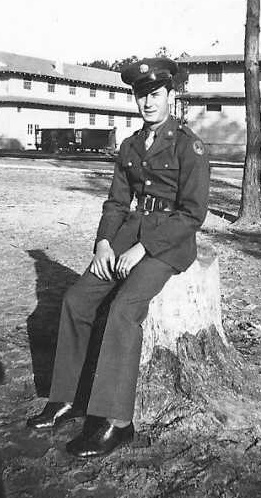
William Raymond "Bill" Mooney was born November 10, 1922 in Echo, Logan Co., Ar.
to William Royston "Bill" & Esther Mae "Essie" Moore Monney.
August 28, 1943 Bill, while living in Mansfield, Sebastian Co., Ar. married
Edna Laverne Fry of Barber, Scott Co., Ar.
On June 30, 1942 Bill registered for the military draft at Fort Smith,
Sebastian Co., Ar. November 10, 1942 he enlisted in the US Army Air Force at Little Rock,
Arkansas. He states on his enlistment papers he has a grammar school education and his occupation
was Unskilled mechanic & repair man.
Bill served with the 614th Bomber Squadron, 401st Bomber Group,
Heavy. More about this Bomber Group's activities Bill was
serving with them is at the bottom of the page.
On April 9 1944 Ssgt William Ray Mooney was killed while in action. He was memorialized on the
Tablets of the Missing in the Cambridge American Cemetery in Cambridge, England. He also has a memorial at Pine Log Cemetery
in Logan Co., Ar. He was awarded the Purple Heart and Air medals.
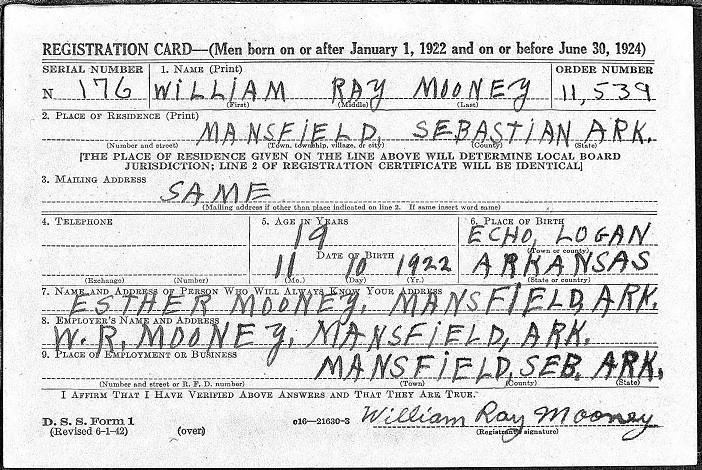
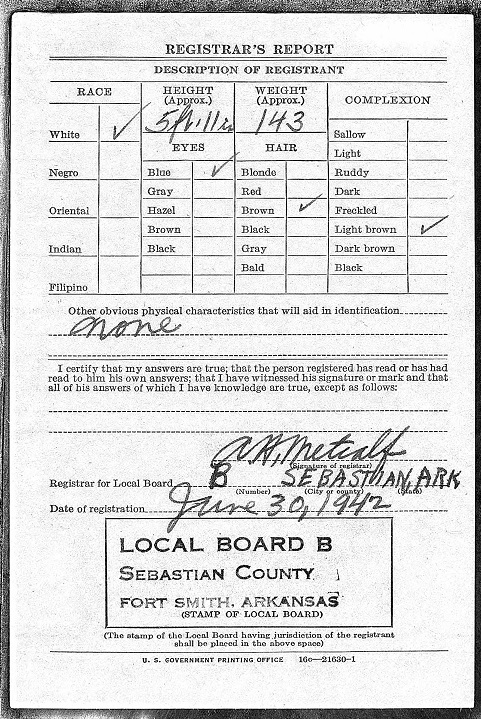

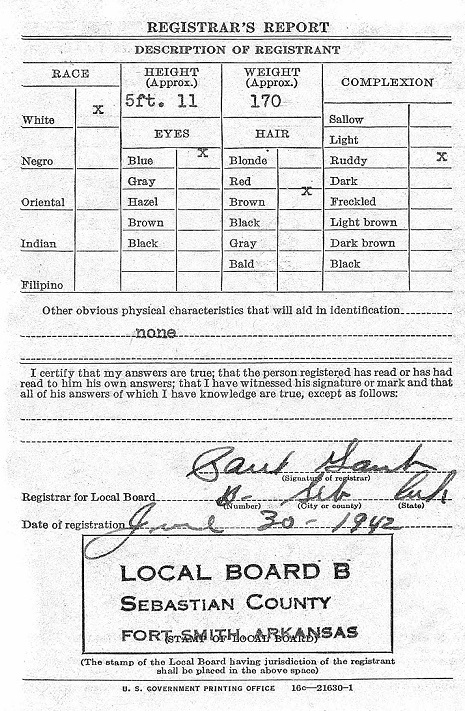
April 11, 1943
Southwest Times Record
Fort Smith, Arkansas
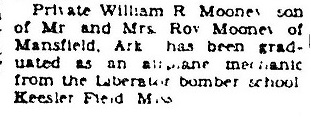
September 8, 1943
Southwest American
Fort Smith, Arkansas
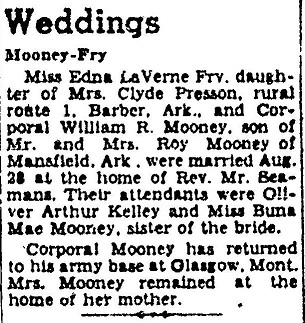
Decemter 5, 1943
Southwest Times Record
Fort Smith, Arkansas
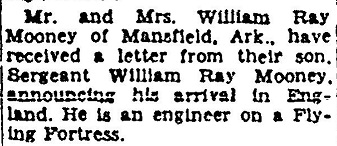
March 19, 1944
Southwesst Times Record
Fort Smith, Arkansas

Tablets of the Missing in the Cambridge American Cemetery



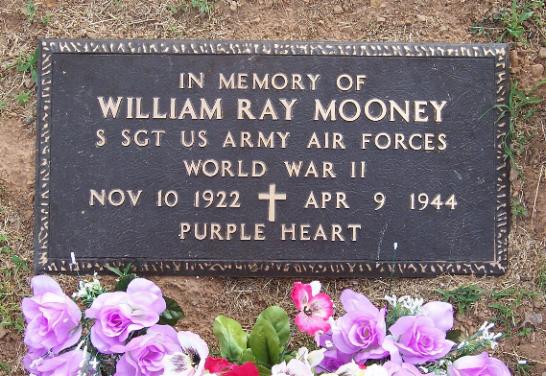
from HISTORY OF THE 401ST FIGHTER WING
The 401st Fighter Wing traces its illustrious beginnings to the 401st Bombardment Group (Heavy) of World War II
tame. The War Department constituted the 401st Bombardment Group (Heavy) on 20 March 1943 and activated it at
Ephrata Army Air Base in the state of Washington, on 1 April 1943. Four flying squadrons, the 612th, 613th, 614th, and
615th Bombardment Squadrons were simultaneously activated and assigned to the group.
The group stayed at Ephrata Army Air Base long enough to receive personnel and equipment, then moved to
Geiger Field, Washington, on 15 June 1943, to begin initial B-17 flight training. After three weeks, the group relocated to
Great Falls Army Air Base, Montana, to complete its training. Following this final phase of B-17G aircrew training, which
lasted until 19 October, the group began deployment to Deenethorpe, England, to join the war effort. The ground forces
made the journey aboard the Queen Mary, while the aircraft followed a route to Newfoundland, then across the Atlantic to
Scotland before reaching their final destination. The unit reached full operational strength on 19 November 1943. The
401st entered the war on 26 November 1943 and conducted its first bombing mission against Bremen, Germany. Poor
weather conditions prevented visual targeting and forced aircrews to use radar bombing techniques to penetrate the
heavy cloud cover, but the group lost no aircraft on this mission. Later attacks centered on factories, oil refineries, power
plants, V-1 and V-2 sites, marshalling yards and port facilities throughout Europe. The group participated in attacks on
many strategic targets in France, Holland, Luxembourg, and Germany, but the majority of its early missions focused on oil
reserves in order to deny fuel to the Nazi occupation forces.
The group earned two Distinguished Unit Citations during its early combat missions. The first was for a daring but
highly successful 11 January 1944 attack on aircraft production facilities in Oschersleben, Germany. Because the target
was so near to Berlin, the Germans had large numbers of flak batteries and other defenses in the area. In addition to the
heavy anti-aircraft fire, Nazi fighters attacked the bombers for over three hours. On 20 February 1944, the group earned
its second award by successfully bombing, and thereby closing, the Erla Maschinewerk aircraft assembly facilities near
Leipzig.
The group continued to bomb Industrial targets near Berlin throughout the early months of 1944, which helped to
impair the Nazi war fighting capability. Later it switched to such tactical targets as coastal defense guns and transportation
centers in preparation for the Normandy invasion. Five minutes before the D-Day landing, June 6, 1944, the 401st bombed gun
emplacements less than 1,000 yards from the beach at one of the landing zones.
|
|
|
|